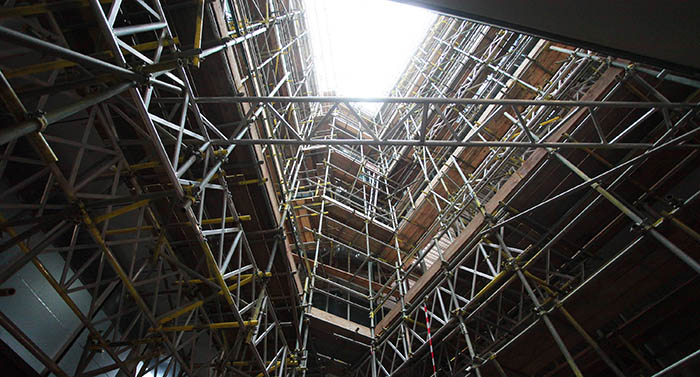Oct . 18, 2024 06:02 Back to list
Custom Formwork Solutions for Concrete Construction Projects and Structures
OEM Formwork for Concrete Structures Revolutionizing Construction Efficiency
In the ever-evolving world of construction, the demand for efficiency, durability, and innovation has never been higher. One of the pivotal elements that contribute to achieving these goals is formwork, particularly OEM (Original Equipment Manufacturer) formwork. This specialized formwork plays a crucial role in shaping concrete structures, enabling architects and engineers to express their vision while ensuring the stability and longevity of the structures. This article delves into the various aspects of OEM formwork for concrete structures, highlighting its advantages, applications, and future prospects.
What is OEM Formwork?
OEM formwork refers to custom-made formwork solutions that are designed and manufactured to meet specific project requirements. Unlike traditional or generic formwork systems, OEM formwork is tailored to the unique dimensions, shapes, and structural needs of a given construction project. This customization allows for increased precision and efficiency, minimizing waste and reducing the overall time required for construction.
Advantages of OEM Formwork
1. Customization and Flexibility One of the primary benefits of OEM formwork is its high level of customization. Whether a project requires complex geometries, curved surfaces, or specific material preferences, OEM manufacturers can create formwork that meets these needs precisely. This customization allows for greater design flexibility and can significantly enhance the aesthetic appeal of a concrete structure.
2. Enhanced Quality and Performance OEM formwork is typically manufactured using high-quality materials and advanced engineering techniques. This results in formwork that can withstand the pressures of wet concrete, ensuring that the final structure maintains its intended form and integrity. The superior quality of OEM formwork reduces the likelihood of defects and can improve the overall performance of the concrete structures.
3. Time and Cost Efficiency By streamlining the construction process, OEM formwork can lead to significant time savings. Custom-designed systems can be set up more quickly and can be reused for multiple pours, which lowers labor costs. Additionally, the reduction in waste associated with tailored formwork systems results in lower material costs, making it a more economical choice in the long run.
oem formwork for concrete structures

4. Environmental Considerations In an age where sustainability is paramount, OEM formwork can contribute to more eco-friendly construction practices. By minimizing waste through precise manufacturing and optimizing the use of materials, OEM solutions align with green building initiatives. Furthermore, reusable formwork systems can significantly reduce the carbon footprint of a construction project.
Applications of OEM Formwork
OEM formwork finds application in a wide range of concrete structures, from residential buildings to large-scale infrastructure projects. Its versatility makes it suitable for
- High-rise buildings Tailored formwork can assist in forming complex designs and structural elements in skyscrapers, ensuring stability and aesthetic coherence. - Bridges and tunnels The construction of intricate forms for bridges and tunnels greatly benefits from the customization provided by OEM formwork, which can accommodate unique geometries and structural requirements. - Industrial facilities Manufacturing plants often require large, open spaces with specific configurations, making OEM formwork ideal for creating functional and efficient layouts.
The Future of OEM Formwork in Construction
As the construction industry continues to embrace technology and innovation, the future of OEM formwork looks promising. Advances in materials science and manufacturing processes, such as 3D printing and prefabrication, are expected to further enhance the capabilities of OEM formwork. Additionally, the growing focus on sustainable building practices and stringent regulations surrounding energy efficiency will likely drive the demand for customized solutions that can cater to these needs.
In conclusion, OEM formwork represents a significant advancement in the construction industry, marrying the demands for precision, efficiency, and sustainability. By allowing for customization tailored to specific project requirements, it paves the way for innovative concrete structures that not only meet functional needs but also enhance the built environment. As technology progresses and the construction landscape evolves, OEM formwork will undoubtedly play a pivotal role in shaping the future of concrete construction.
-
High-Quality U Head Jack Scaffolding – Reliable Scaffolding Jack Head Manufacturer & Factory
NewsJul.08,2025
-
High-Quality I Beam H20 Leading Timber Beam H20 Material Factory, Exporters & Manufacturers
NewsJul.08,2025
-
High-Quality Powder Coating Steel Formwork - Durable & Corrosion Resistant Solutions
NewsJul.07,2025
-
Inclined Column Formwork Supplier – Durable & Precise Solutions for Unique Structures
NewsJul.07,2025
-
High-Quality Water Stop Solutions Trusted Water Stop Company & Suppliers
NewsJul.07,2025
-
High-Quality Formwork Material Supplier Reliable Manufacturer & Factory Solutions
NewsJul.06,2025